SUMMARY
This is AI generated summarization, which may have errors. For context, always refer to the full article.
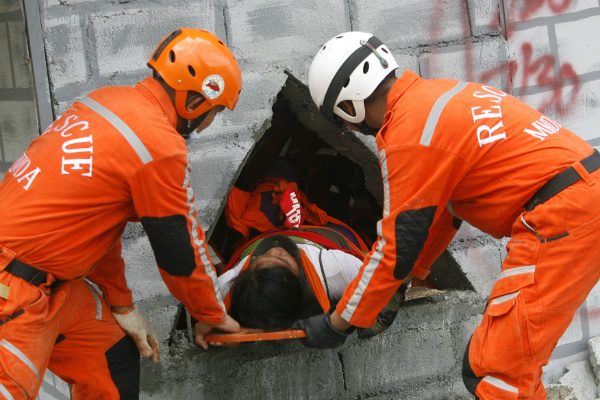
MANILA, Philippines – If you are trapped inside a collapsed building after an earthquake, would you know what to do?
According to the Metro Manila Earthquake Impact Reduction Study (MMEIRS), residential buildings will sustain the bulk of the damage with around 339,800 houses partially damaged and some 168,300 heavily damaged. (READ: What dangers await when the West Valley Fault moves?)
In the very first Metro Manila-wide earthquake drill, this was the scenario rescuers worked with in Marikina on Thursday, July 30. During the drill, a family of 6 consisting of 5 adults and an infant, were trapped inside as their house collapsed after the earthquake.
Ignacio Golez, one of the MMDA rescuers deployed during the drill, gave Rappler some tips on what to do while inside a collapsed structure:
1. Duck, cover and hold.
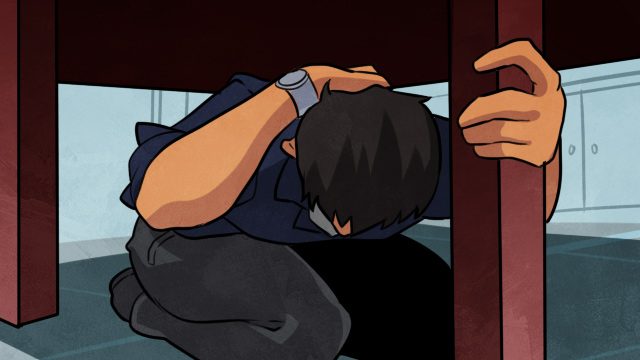
He said that during an earthquake, “Hanapin mo muna ang pinakamatibay na lugar. Kung walang table, posts or beams. Doon ka pumwesto and then drop, cover, and hold.” (Find the steadiest place. If there are no tables, [stay near] posts or beams. Stay there and then drop, cover, and hold.)
(READ: Earthquake tips: what to do before, during, and after)
2. Find your escape route.
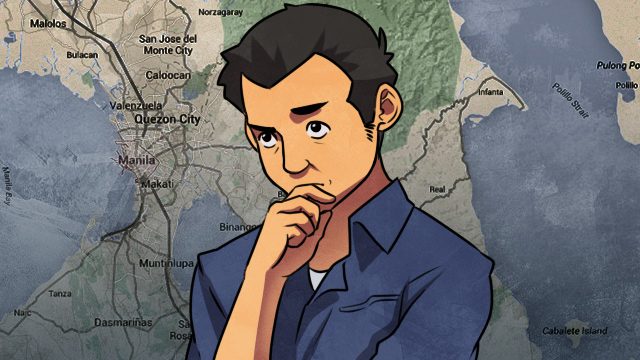
When the house or building you are in collapses after an earthquake, don’t panic. “Number one, be calm. Dapat alam mo ‘yung escape route mo.” (You should know your escape route.)
He said it’s important to stay calm and gather your thoughts to be able to properly plan your way out.
It’s also important to plan your escape route ahead of time for scenarios like this, especially if your house or your building has not been reinforced according to standards. (READ: Part 1: Can your house withstand major earthquakes?)
3. If you are completely trapped, ‘duck, cover and hold’

In the event that your way is completely blocked, Golez advised to again “duck, cover, and hold” under tables or near beams and posts. As this is a standard safety procedure, he said this will aid rescuers in easily finding victims.
4. Patiently wait for rescue.
He said this is important to reduce casualties.
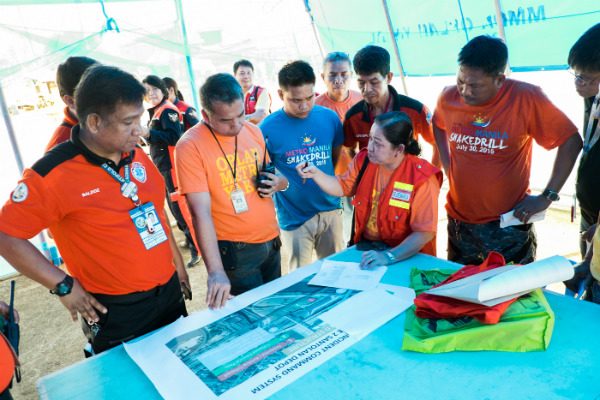
Earthquake drill
To promote a culture of disaster preparedness, the Metro Manila Development Authority coordinated with local government units, various government agencies, hospitals, schools, businesses and the religious sector to participate in the Metro Manila Shake Drill. (READ: All you need to know about preparing for earthquakes)
At the LRT 2 Santolan Depot, the command center of the East sub-task force was set up. The East sector consists of those from Marikina and Pasig.
There were ambulances, fire trucks, military helicopters and rescue trucks deployed in the area. A tent was also set up for medics, psychosocial therapy, and burial services.
At 10:30, loud sirens were set off to announce the start of the drill. Participants were asked to perform the “drop, cover, and hold” safety routine for 45 seconds as the sirens went off.
Various scenarios were simulated in the 4 quadrants of Metro Manila to test the task forces’ capability to respond to collapsed structures, fire, clearing debris and treating the injured. There were also pocket drills staged by LGUs to practice own disaster response.
In the East quadrant, the scenario assigned was “building collapse”. The scenarios for rescue were staged near the Marikina Bridge.
1) Victims trapped inside their house
A family of 6 was trapped inside a house after the quake. Of the 6, 5 adults were rescued but an infant died due to impact. MMDA rescuers aided them out by creating holes through the wall.
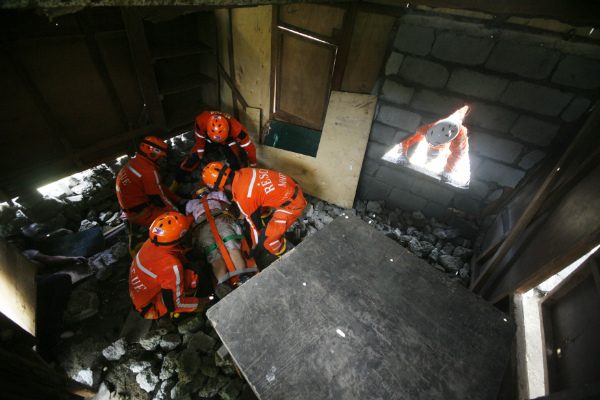
2) An electrical post fell on top of a car
Two sustained critical injuries after an electrical post fell on top of their car. They were retrieved by removing the top portion of the vehicle. (READ: Earthquake tips for drivers: Don’t panic)
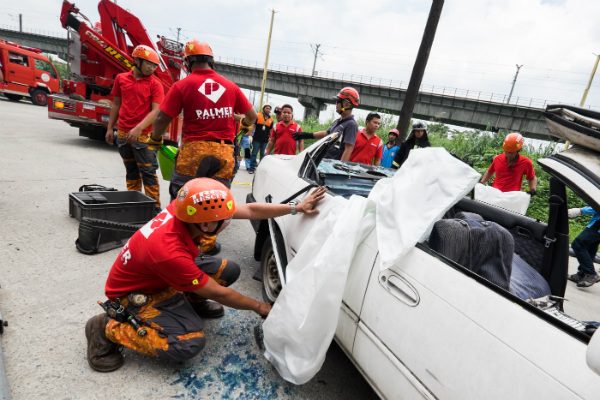
3) Marikina Bridge collapse
A civilian was rescued from the collapsed Marikina Bridge through high-angle rescue. He was brought to a rubber boat and was eventually turned over to an ambulance that gave him medical assistance.
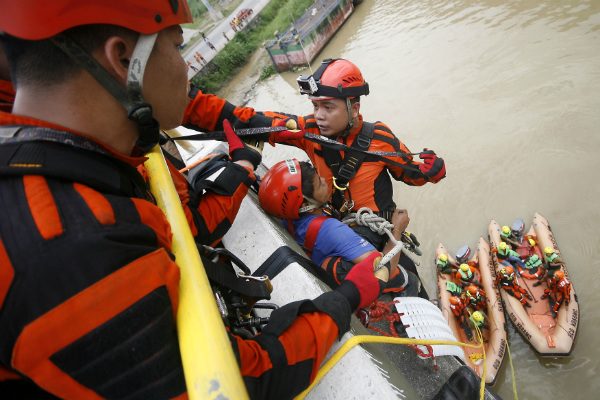
A pontoon bridge was also set up to support a continuous deck for pedestrian and vehicle travel.
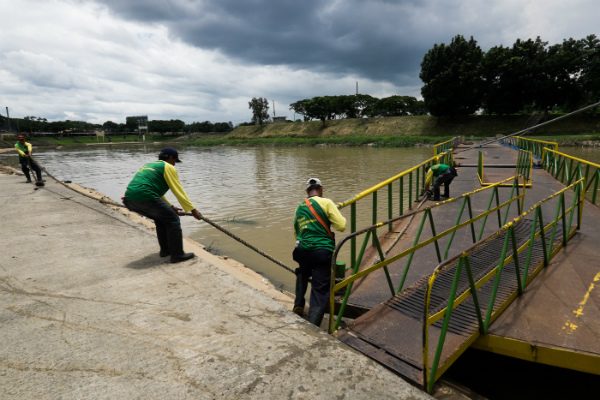
“Realistic as possible”
According to MMDA director Josefina Faulan, deputy commander of the East sector, the drill was a “success” and was as “realistic as possible.”
“We were able to complete the scenarios planned. Given the preparation, asset, and response, it’s a success,” she told Rappler.
Faulan said that the East sector was able to simulate the drill “as realistic as possible.” According to her, there was unexpected assistance coming from outside of Metro Manila – response teams from Antipolo, Angono, and Taytay of the provincial government of Rizal came to the East sector’s aid that morning.
“Angono, Antipolo, and Taytay just came in this morning but were deployed immediately para ma-practice kung paano ang pagbibigay ng command at response,” Faulan said. “Kaya nga tayo nagdi-drill, practice makes perfect.”
(Angono, Antipolo, and Taytay just came in this morning but were deployed immediately so we could practice how to delegate command and response,” Faulan said. “That’s the reason why there are drills, practice makes perfect.)
Lessons learned
Faulan during the de-briefing said there are lessons learned from the drill.
“Dapat meron talagang focal person for every stakeholder ng agency at unit na makapag-coordinate. Yung iba kasi just came in this morning but we tried to accommodate,” she said.
(There should be a focal person for every stakeholder in the agencies and units to coordinate. Others just came in this morning but we tried to accommodate.)
She also stressed the importance of planning ahead and keeping an inventory of assets. According to her, this will speed up deployment when actual rescue is needed.
“Kahit hindi pumasok sa command post, puwede silang i-deploy where they are. Ang mahalaga alam namin ang asset para alam namin ang ide-deploy namin,” she said.
(Even if they are not inside the command post, they can still be deployed wherever they are. What is important is that we know what the assets are so that we know what to deploy.)
Faulan said the very first metro-wide drill is only the start of several more to come. – Rappler.com
Add a comment
How does this make you feel?
There are no comments yet. Add your comment to start the conversation.